Biometrics
Biometric access control to add that extra security.
Increased Security
Biometric Access Control
Increase your security and eliminate lost or forgotten keys. Scan in with biometrics fingerprints for easy, secure access.
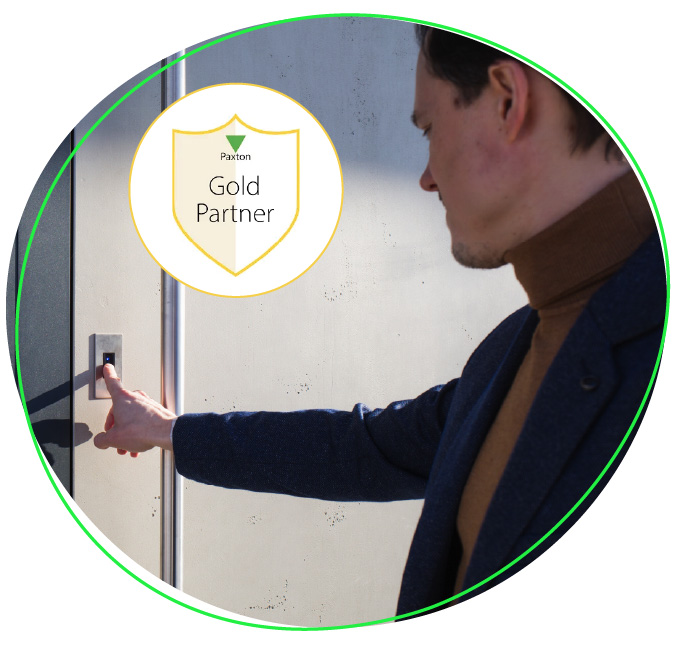
We're trusted by leading companies














What is biometric access control?
Paxton biometric access control system, commonly known as fingerprint access control, is ideal for schools and workplaces looking to utilise unique fingerprints in the place of keys or ID cards.
✔ No more lost, stolen or forgotten keys
✔ Remove the need for physical cards, ideal in schools
✔ Seamless integration with existing systems
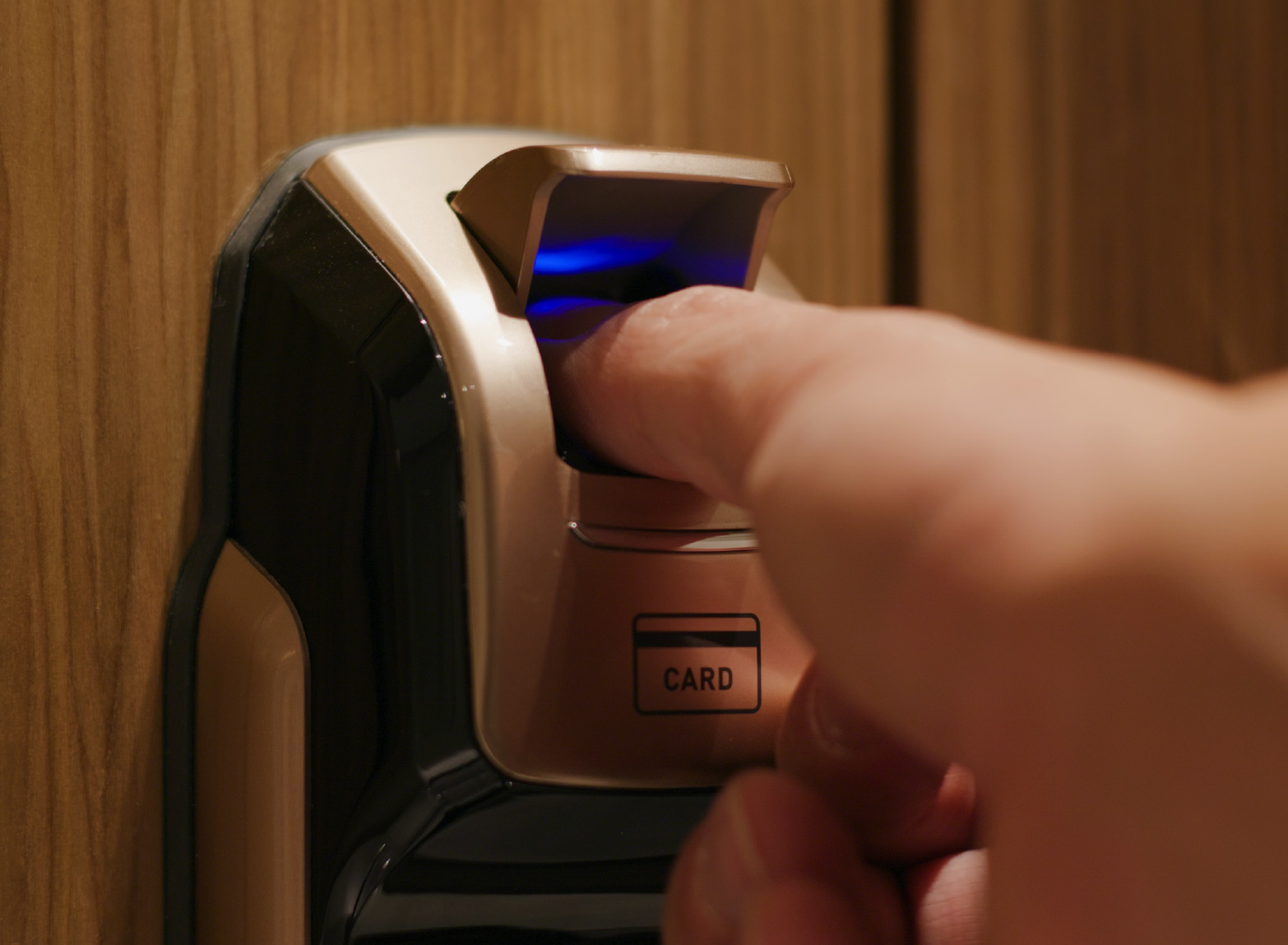
Secure access to areas and accounts
Take your security to the next level with biometric access control. We install and integrate with existing systems to create a seamless experience, no matter the use case!
Enhanced Security
Biometric systems use unique physical traits (like fingerprints), making it extremely difficult to duplicate or forge access credentials.
Eliminates Credential Sharing
Unlike PINs or cards, fingerprints can't be shared or stolen, ensuring that access rights aren't misused, eliminating the chance of impersonations.
Convenience and Speed
Users don’t need to remember passwords or carry access cards. Authentication is quick and seamless with a simple fingerprint scan.
Audit Trails and Monitoring
Most systems log each access attempt, enabling detailed tracking of who entered and when, which helps in audits and investigations.
Reduced Risk of Unauthorised Access
Since fingerprints are unique to each individual, access is limited strictly to authorised personnel, reducing the chance of intrusions.
Low Maintenance and Cost
Once installed, biometric systems have fewer ongoing costs compared to replacing lost cards or resetting passwords regularly.
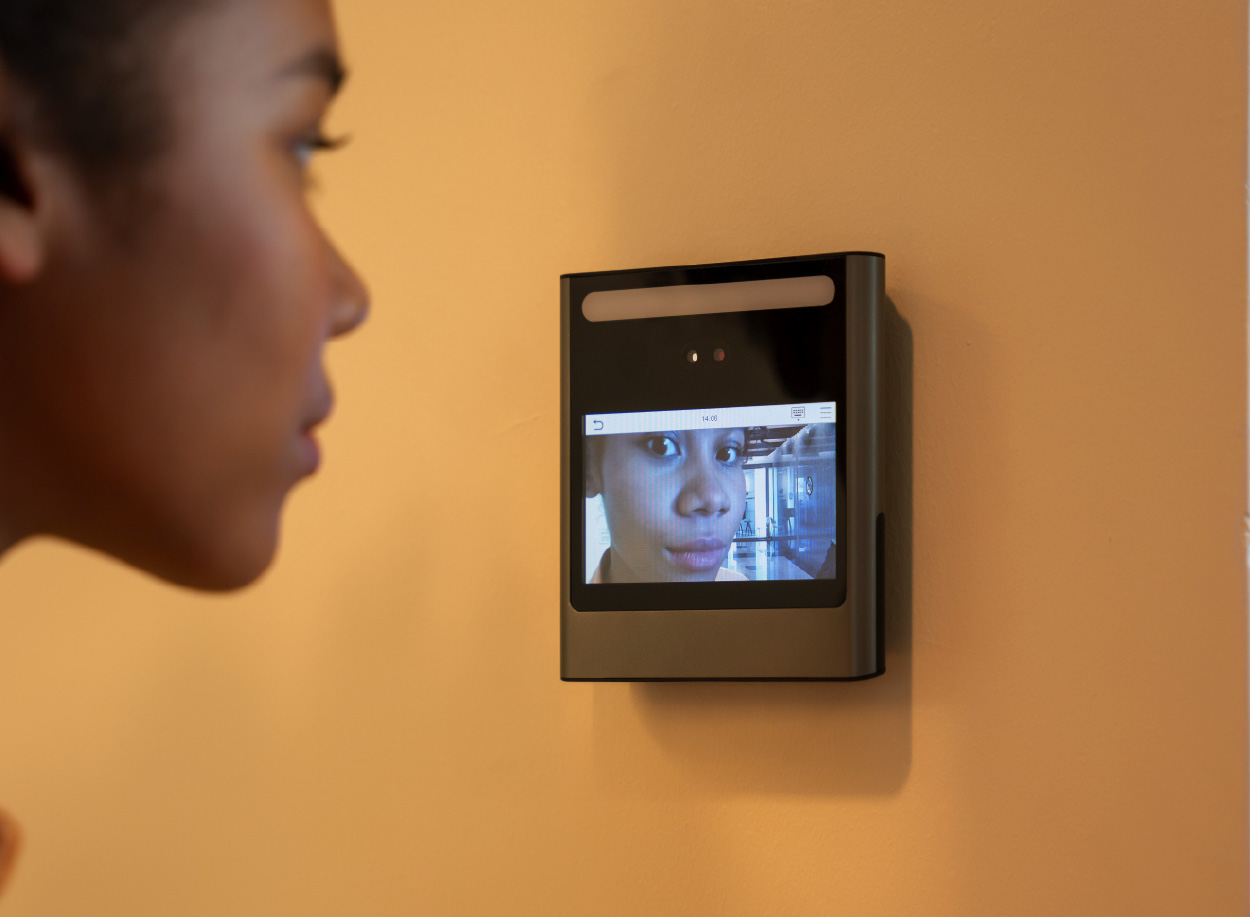
An introduction to biometrics
Biometric access control systems work by utilising unique physical characteristics, like fingerprints, iris scans and facial recognition to identify users and grant them access to certain areas or information.
These differ from traditional access control systems such as key fobs, ID cards and passwords, and instead are a unique identifier that's tied to you - meaning it can't be lost, stolen or misused.
How biometric access control system work
To implement biometrics, you would first need to capture the relevant biometrics from each user you intend to enrol. During the enrolment stage, the scanner or reader would capture these to create a template.
After this, upon using the biometrics to gain access, the reader captures the same characteristics again and compares them to the stored template captured during the enrolment process. The system will determine if they are a match or not almost instantly. If they are, access will be granted to the authorised individual.
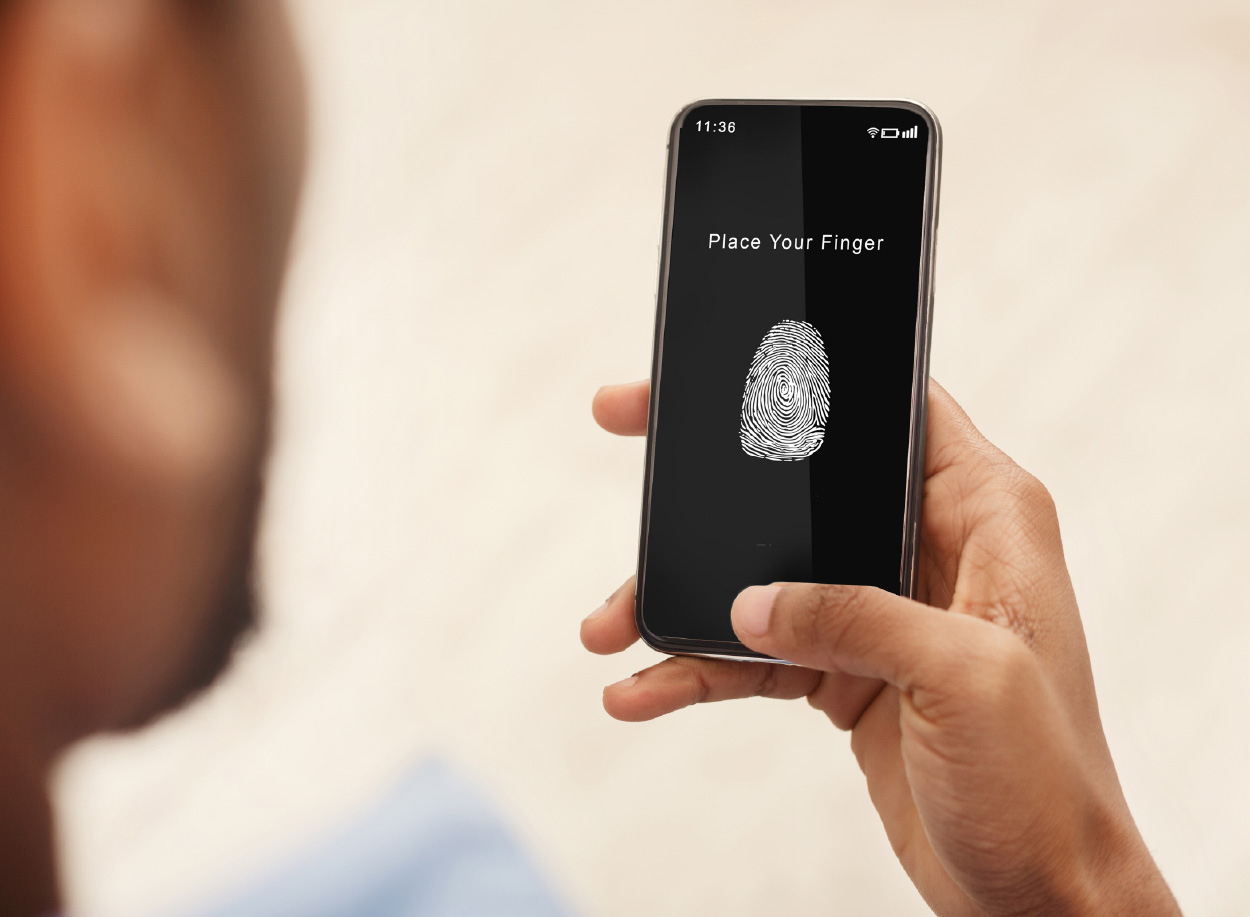
Biometric access control types
There are many types of biometric access control. We'll help you find which is right for you and your needs!
Fingerprint Access Control
Uses the unique ridges and patterns on a person’s fingerprint to verify identity. Fast, reliable, and cost-effective.
Vein Recognition
Scans vein patterns in the hand or finger. Highly secure and effective in harsh conditions.
Facial Recognition
Analyses facial features for identification. Contactless and ideal for busy areas.
Eye Scan Door Locks
Covers systems that scan the eye—typically iris or retinal. Offers strong, low-contact security.
Retinal Scan Door Locks
Maps retinal blood vessels. Extremely accurate but more intrusive and costly; best for high-security.
Iris Scan Door Locks
Scans the iris for identity verification. Very accurate and less invasive than retinal scans.
Fingerprint Access Control
Uses the unique ridges and patterns on a person’s fingerprint to verify identity. Fast, reliable, and cost-effective.
Vein Recognition
Scans vein patterns in the hand or finger. Highly secure and effective in harsh conditions.
Facial Recognition
Analyses facial features for identification. Contactless and ideal for busy areas.
Eye Scan Door Locks
Covers systems that scan the eye—typically iris or retinal. Offers strong, low-contact security.
Retinal Scan Door Locks
Maps retinal blood vessels. Extremely accurate but more intrusive and costly; best for high-security.
Iris Scan Door Locks
Scans the iris for identity verification. Very accurate and less invasive than retinal scans.
Who we install for
Whether it's a school, office, hotel, healthcare site or elsewhere, the ability to lockdown specific areas, and limit access to specific people in seconds from anywhere is essential.

Schools
Secure doors and classrooms with fingerprint or face ID. Limit access to approved users.
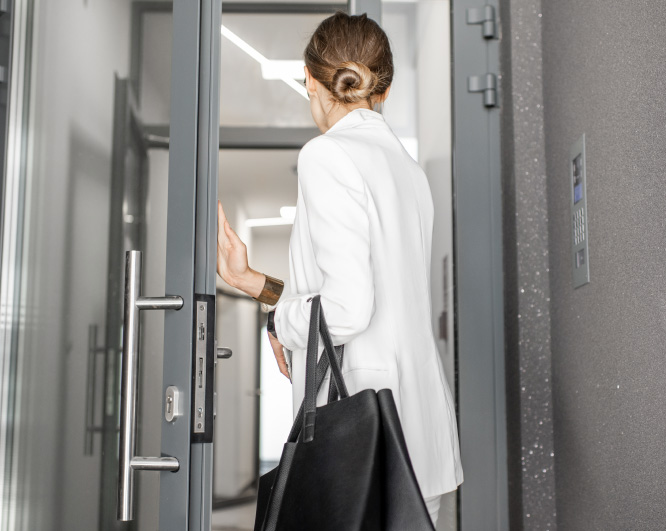
Office Buildings
Control access to set people. Biometrics reduce lost cards and stop unauthorised entry.
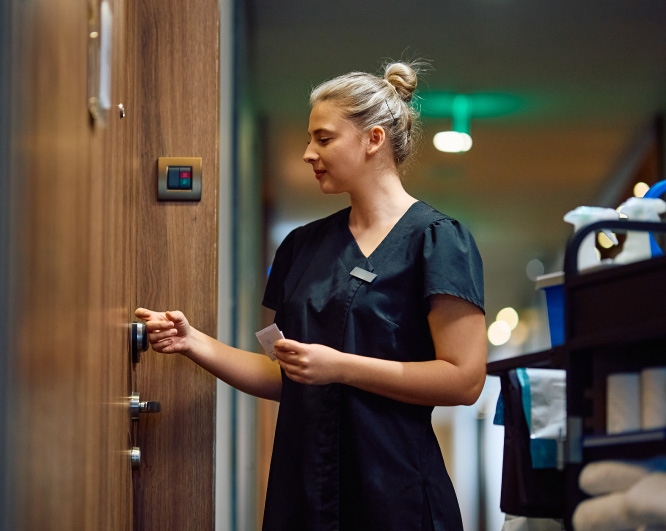
Hospitality
Secure staff areas and guest-only zones. Provide a keyless, secure experience with minimal disruption.
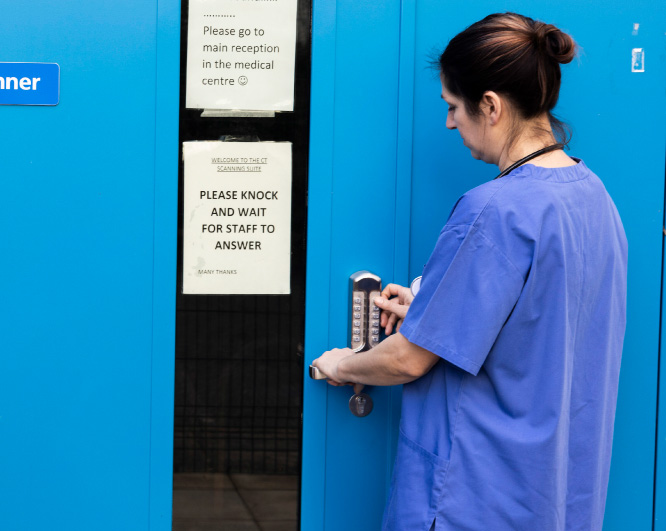
Healthcare
Restrict access to meds, records, and wards. Ensure only verified staff enter sensitive areas.

Schools
Secure doors and classrooms with fingerprint or face ID. Limit access to approved users.

Office Buildings
Control access to set people. Biometrics reduce lost cards and stop unauthorised entry.

Hospitality
Secure staff areas and guest-only zones. Provide a keyless, secure experience with minimal disruption.

Healthcare
Restrict access to meds, records, and wards. Ensure only verified staff enter sensitive areas.
Frequently Asked Questions
A biometric access control system identifies individuals using unique physical attributes like fingerprints, facial features, palm vein patterns, or iris scans. Unlike traditional systems relying on cards or codes, biometrics offer enhanced accuracy by leveraging traits that are nearly impossible to replicate.
Biometrics refer to physical or biological characteristics used for identification. Common examples include fingerprint recognition, facial detection, and retina scanning—these technologies are well-known for enabling secure, individual-specific access.
The primary role of biometrics is to validate a person’s identity with high precision—whether it’s a traveler, employee, or someone applying for benefits. Biometrics can also flag prior aliases or associated security concerns tied to that individual.
Biometric systems are hard to bypass because physical traits like fingerprints or irises are difficult to forge. These systems often include multi-factor authentication, making unauthorized access much more challenging than cracking a simple password or code.
Iris recognition is widely considered among the most secure biometric methods due to the complexity and uniqueness of iris patterns. It is not only extremely hard to duplicate but also resists most common spoofing techniques.
Passwords are prone to various attacks like phishing and brute-force attempts. Biometrics, being unique to each individual and harder to replicate, generally offer a higher level of security against unauthorized access.
While PINs and pattern locks can be guessed or observed, fingerprint recognition tends to be more secure due to the difficulty of copying biometric data. Still, no system is foolproof, and layered security is ideal.
Biometric data involves capturing distinctive human features—such as facial images, voice prints, or fingerprints—to establish identity. This information is used in systems requiring secure and reliable identification.
Before gathering biometric data, it’s important to get clear, informed consent from individuals. They should be made aware of what data will be collected, its purpose, and how long it will be stored or used.
The better option depends on user needs. Touch ID offers convenience and added security in public areas, while a strong passcode can protect against biometric spoofing. For best results, using both methods together is recommended.
A biometric access control system identifies individuals using unique physical attributes like fingerprints, facial features, palm vein patterns, or iris scans. Unlike traditional systems relying on cards or codes, biometrics offer enhanced accuracy by leveraging traits that are nearly impossible to replicate.
Biometrics refer to physical or biological characteristics used for identification. Common examples include fingerprint recognition, facial detection, and retina scanning—these technologies are well-known for enabling secure, individual-specific access.
The primary role of biometrics is to validate a person’s identity with high precision—whether it’s a traveler, employee, or someone applying for benefits. Biometrics can also flag prior aliases or associated security concerns tied to that individual.
Biometric systems are hard to bypass because physical traits like fingerprints or irises are difficult to forge. These systems often include multi-factor authentication, making unauthorized access much more challenging than cracking a simple password or code.
Iris recognition is widely considered among the most secure biometric methods due to the complexity and uniqueness of iris patterns. It is not only extremely hard to duplicate but also resists most common spoofing techniques.
Passwords are prone to various attacks like phishing and brute-force attempts. Biometrics, being unique to each individual and harder to replicate, generally offer a higher level of security against unauthorized access.
While PINs and pattern locks can be guessed or observed, fingerprint recognition tends to be more secure due to the difficulty of copying biometric data. Still, no system is foolproof, and layered security is ideal.
Biometric data involves capturing distinctive human features—such as facial images, voice prints, or fingerprints—to establish identity. This information is used in systems requiring secure and reliable identification.
Before gathering biometric data, it’s important to get clear, informed consent from individuals. They should be made aware of what data will be collected, its purpose, and how long it will be stored or used.
The better option depends on user needs. Touch ID offers convenience and added security in public areas, while a strong passcode can protect against biometric spoofing. For best results, using both methods together is recommended.
More information about us
Why Choose Paxton Biometric Access Control Systems?
Paxton offers some of the best biometric access control systems in the UK, designed for a wide range of sectors including education, healthcare, hospitality, and commercial properties. At Secure Entry, our Paxton solutions are trusted for their reliability, scalability, and ease of use. Whether you need a standalone unit or a fully networked solution, we provide flexible options to meet your needs.
Fingerprint Access Control: Secure and Convenient
Our fingerprint access control systems provide fast, accurate identity verification. These systems eliminate issues like lost keycards or forgotten passwords and are easy for users to operate. Each access control fingerprint reader is built to perform in a variety of conditions, including high-traffic and outdoor environments.
Looking for cost-effective options? We’ll help you find a solution with Secure Entry, that balances performance and value. If you're curious about fingerprint access control system price, our team can recommend options based on your budget and requirements.
Biometric Access Control Methods
Secure Entry supports multiple biometric access control methods, including:
- Fingerprint scanning: The most popular and cost-effective method.
- Facial recognition: Contactless and ideal for high-traffic areas.
- Iris recognition: Ultra-secure, used in high-security environments.
Each method has unique advantages, and we can help you choose the best one for your building and user base.
Trusted Biometric Access Control in the UK
At Secure Entry, we provide Paxton solutions, a leading provider of biometric access control UK solutions. Our systems are used across thousands of sites for their reliability, ease of integration, and high security standards. With UK-based support and a reputation for excellence, we ensure a smooth and effective installation every time.
Need Help Choosing the Right System?
Whether you're securing a single door or an entire facility, at Secure Entry, we can help you select the right access control biometric solution. From understanding access control fingerprint options to comparing fingerprint access control system prices, our experts are ready to assist.


